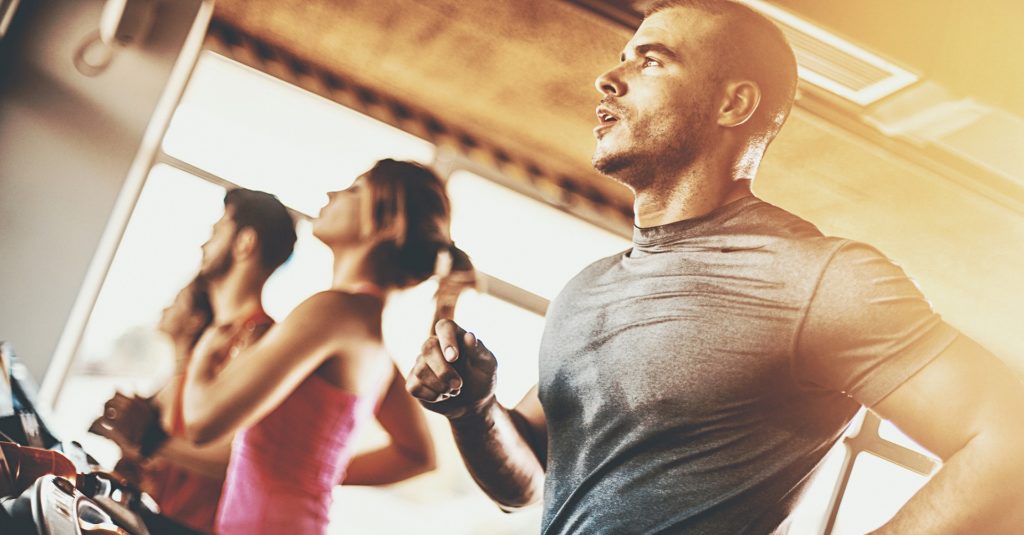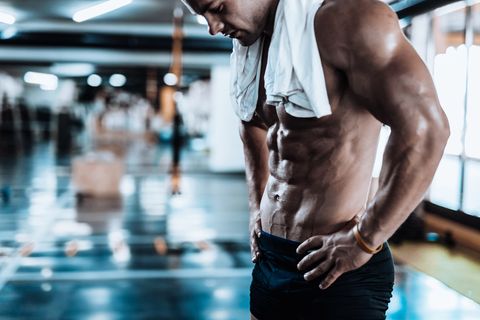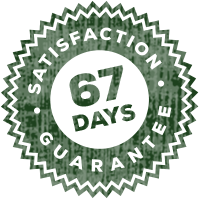Weight loss has been the ultimate way of attaining a fabulous physique. But is it effective? Fitness trainers disagree. On the contrary, building muscle and losing fat is the best way of achieving a well-toned body.
Although the two goals are conflicting, it’s possible to achieve them simultaneously. Fat loss is different from weight loss. The latter requires you to lose both fat and muscle, which causes the body to grow smaller without changing your shape. That’s not the goal here; instead, you want to build muscle and develop an incredible physique while at it.
So, how do you burn fat while building muscle? The next part of this article explains it in detail.
Burning fat while building muscle is a gradual process that involves diet changes (eating high-protein, low-carb foods), training, and consistency. Diet changes help you balance calorie surplus and calorie deficit for muscle building while training enhances muscle growth and strength.
How To Burn Fat While Building Muscle
The common belief has been that you can either build muscle or burn fat, not both. That’s because they involve two conflicting processes. When burning fat, the body needs a calorie deficit while a calorie surplus is required to build muscle.
Achieving both goals simultaneously involves a delicate balance of building a calorie surplus and a calorie deficit in the body. This is only possible through body recomposition, which consists of changing the lean mass and fat mass ratio to build muscle and burn fat. Lean mass comprises body muscles, organs, tissues, tendons, and ligaments, while fat mass is the excess energy stored in this form.
Therefore, body recomposition hardly leads to weight loss; sometimes, the plan may cause the body to maintain the current weight or gain more pounds. You’ll also have notable changes in your physique due to the additional muscle mass. So, how do you do it?

Building Muscles
Here are ways of building muscles:
1. Add Proteins to Your Diet
A high protein diet aids fat loss and calorie burn and builds muscle. That’s because proteins boost metabolism, which is critical in muscle building and burning calories. Numerous studies show that high protein intake is crucial for athletes who want to maintain muscle mass and lose fat.
After eating, some calories are used to metabolize food, creating a thermic effect in the body. Typically, proteins have a higher (30%) thermic effect than carbs (5-10%), which means if your diet has 100 calories, 70 become usable calories.
A high protein diet increases calories burned, which is particularly useful when eating a caloric surplus. Earlier, we mentioned that caloric surplus is critical in muscle building, and eating more proteins is one way of doing it. Without enough protein, the body finds it challenging to repair muscle tissues that break down during strength training.
A high protein intake also prevents muscle loss when burning fat. Typically, the metabolic rate reduces when you embark on a weight loss regimen to burn excess fat. As a result, the body ends up burning fewer calories, activating a starvation mode. Eating plenty of proteins prevents muscle loss by boosting the metabolic rate as the body loses fat.
Lastly, a high-protein diet reduces appetite, which aids in fat loss. The diet keeps you satiated longer, which diminishes snacking and craving, a significant cause of fat gain. Consequently, you eat fewer calories without having to count or control portions.
2. Perform Resistance Training Exercises
Resistance training is a critical part of body recomposition as it strengthens and thickens the muscles causing the body to become bigger and bulkier. The training involves using resistance to build endurance, strength, and the size of skeletal muscles. It’s based on the notion that muscles only develop resistance when trained to do so. When done repeatedly, the muscles become stronger.
Resistance training exercises also increase myofibrils’ formation, leading to thicker muscle fibers. The muscles get damaged during the intense training but come back larger after muscle repair. The added structure causes the muscles to enlarge, creating large skeletal muscles evident in people with great bodies.
A good resistance training regimen should include variables like rest, repetitions, sets, and intensity for the best results. Be sure to use the right equipment, whether you’re training at home or the gym. Free weights, like barbells and dumbbells, are great additions.
Note that sticking to the same resistance training routine isn’t enough to build muscle; it’s crucial to increase resistance along the way. This means that you need to increase what you’re lifting gradually or the number of reps you’re doing.
3. Caloric Cycling
Caloric cycling is the modification of the macronutrient and calorie intake to complement your goals. Every time you eat food, the body receives new calories, and it has three options – to burn them to release energy, store them as fat, or repair and build muscle.
If the goal is body recomposition, you want the new calories to repair muscles injured during resistance training workouts. The first step is to determine the number of calories your body burns when you don’t exercise. You can ask a dietitian or a personal trainer to help you, but an online calorie calculator may come in handy, too.
A good rule of thumb is to take enough calories when doing cardio exercise to have a healthy maintenance number. The high-calorie intake allows the body to experience a slight calorie deficit to enhance fat loss. If there’s a large calorie deficit, the body breaks down muscle tissue to provide energy, causing muscle loss.
This means you need a higher calorie intake than your maintenance number when doing strength training exercises. Adding 5-15% of calories to your maintenance calories keeps your body energetic throughout the workout.

4. Add Cardio Exercises to Your Workout
There’s a misconception that cardio or aerobic exercises hinder muscle building by causing the body to break down muscles for fuel. It isn’t true. On the contrary, a combination of cardio, resistance training, and a healthy diet build muscle and aid in fat loss.
Cardio training sets off various adaptations in the body, making the muscles stronger and more efficient. In addition, long and relaxed aerobic bouts help the body recover from intense resistance training and weightlifting.
The trick is to indulge in long and slow aerobic exercises to increase blood flow, reduce soreness, and set off the recovery process. The activities also improve the body’s readiness for the next intense training. Too many intense workouts without rest or breaks can take a toll on the body.
Cardio exercises improve one’s lifting performance with the right duration and intensity. They enhance the aerobic capacity of fast-twitch muscle cells, which produce power and strength during resistance training.
The best way to add cardio exercises is to alternate between long and slow cardio exercises and fast and quick ones. Adding a 30-35-minute aerobic session to a weekly resistance training schedule, for example, goes a long way in realizing the desired results.
Be sure to make time for slow runs and breathe through the nose to help the body adapt to long runs. On the same note, it’s best to indulge in other aerobic activities like swimming and cycling if running hurts your joints or other body parts.
5. High-intensity Strength Training
Strength training is another way of building muscles. It’s different from resistance training, as it involves lifting heavy equipment at low reps to increase muscle strength. On the other hand, resistance training means you’re building muscle using resistance from your body weight, machines, or free weights like dumbbells.
For strength training to help you build muscles, you must perform high-intensity exercises using high reps and light weights and combine them with cardio bursts. Strength training only enhances muscle mass by breaking down muscles and rebuilding them, which continues long after the workout. However, it doesn’t increase heart activity as cardio exercises.
Cardio causes a burst of calorie burn for a few minutes; then, it slows down after the activity. Thus combining high-intensity strength training and cardio keeps the heart rate elevated, leading to a high-calorie burn. A good example is to perform strength movements like deadlifts and cardio bursts for a minute.
6. Reduce Alcohol Intake
You might not believe it, but indulging in habits like alcohol consumption has significant setbacks on how to burn fat while building muscle. Alcohol reduces muscle protein synthesis, which aids muscle repair by counteracting muscle protein breakdown during exercise. Studies also show that alcohol reduces the body’s metabolism, minimizing fat loss.

How to Lose Fat
Besides high protein intake, other ways of losing fat include:
1. Avoid Taking Processed Foods
Processed foods don’t have the three essential nutrients and contain extra calories. They also contain added sugar and additives that lure people into eating them. Processed foods override the body’s normal mechanisms that control overeating leading to significant fat gain.
What’s more, the preservatives contain chemicals that slow down metabolism and cause the liver to become sluggish, inhibiting proper nutrient absorption. For somebody on a muscle-building and fat burn journey, stick to a balanced diet.
2. Increasing the Fiber Intake
The bottom line of any fat loss regimen is to reduce calorie intake. Most people count the number of calories in their diet, but it isn’t necessary if you’re eating the right foods. High-fiber foods like beans and veggies, for example, reduce calorie intake significantly.
That’s because fiber (soluble) lowers one’s appetite by reducing the levels of hunger hormones in the body. They also reduce food movement in the gut, minimizing one’s appetite. Studies also show that fibers increase the production of hormones like peptides and cholecystokinin, which cause the body to feel fuller for a more extended period. All such features reduce calorie intake in the body, which aids in fat loss without losing muscle.
3. Reduce Carbohydrates
A low-carb diet is critical when on a fat loss and muscle-building journey. Eating fewer carbs reduces calorie intake, causing the body to use the fat stored for energy. This diet also makes the body less hungry, so you don’t have to keep on snacking or craving carbs.
Proteins, fibers, and healthy fats are the nutrients responsible for making the body satiated, not calories. Carbs lack all these nutrients and only fill the body with calories. That’s why the body feels hungry within a few hours after eating fries, snacks, white bread, or rice. Besides reducing carbs, increase protein and fiber intake.
4. Forget the Weighing Scale
Forget the weighing scale! Burning fat while building muscle hardly has to do with weight loss. The body might gain weight while gaining muscle, and a weighing scale can’t determine if you’ve gained muscle.
While some people experience tremendous muscle gains at the beginning, the process is painfully slow for other people. The results are only visible in certain muscle areas like the neck and shoulders, legs, or the bum. Clothes may also feel tighter in some areas as you gain muscle and lose fat in others.
5. Get Enough Sleep
It’s not easy to burn fat and build muscle when your body is sleep-deprived. Sleep helps the body relax, release essential growth hormones, and repair the muscles after intense training. When exhausted, it’s challenging for the body to determine if it’s craving glucose or if it’s sleep-deprived.
As a result, you eat unhealthy snacks late at night, which adds to your weight and sabotages your muscle-building efforts.
Find out the best sleeping positions for you and your partner by reading our blog, “What Sleeping Positions Will Be Best for You as a Couple.”

Conclusion
If you’ve been skeptical about how to burn fat while building muscle, you shouldn’t be. Whether you want to bulk up or attain a well-toned body, it’s possible. Adding a few pounds of protein to your diet while cutting back on carbs goes a long way in achieving this goal.
You also want to add some cardio exercises to your strength and resistance training regimen. If you’ve been indulging a little too much in alcohol, it’s time you reduced the intake. Remember, you don’t get results overnight; you must be patient, consistent, and stick to a regimen. It wouldn’t hurt to consult a professional to determine the best way to build muscle and lose fat.
Need extra help? Check out our blog post, “10 Healthy Habits to Start Your 2022 Right.”






